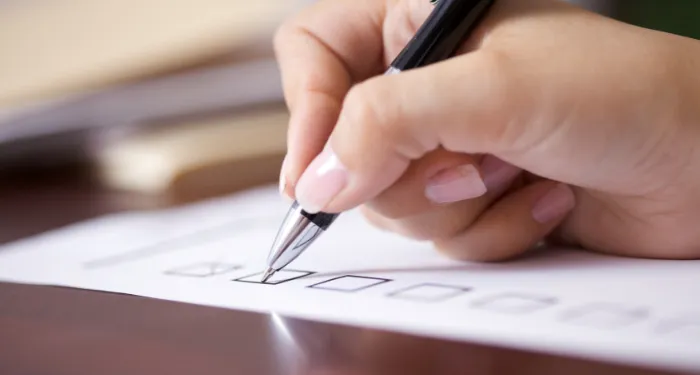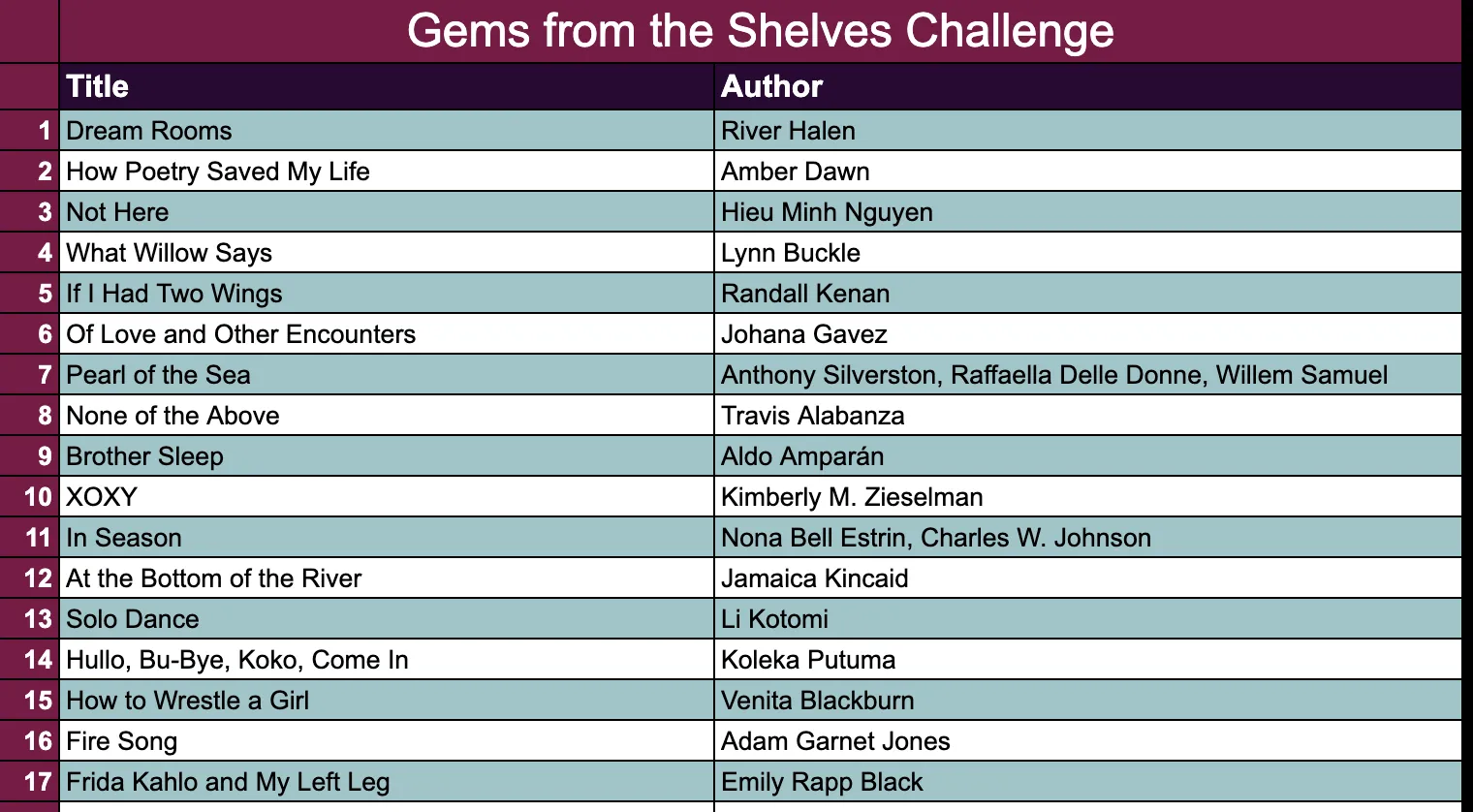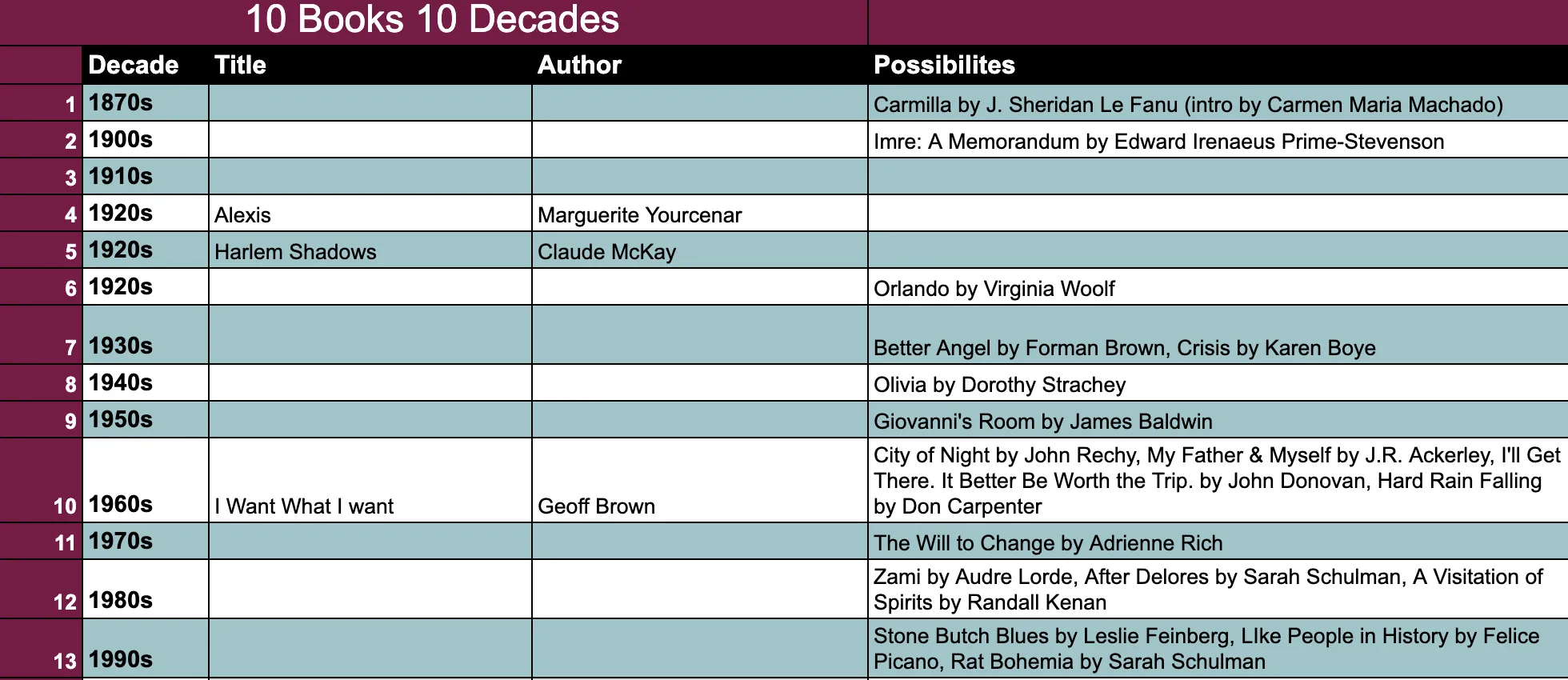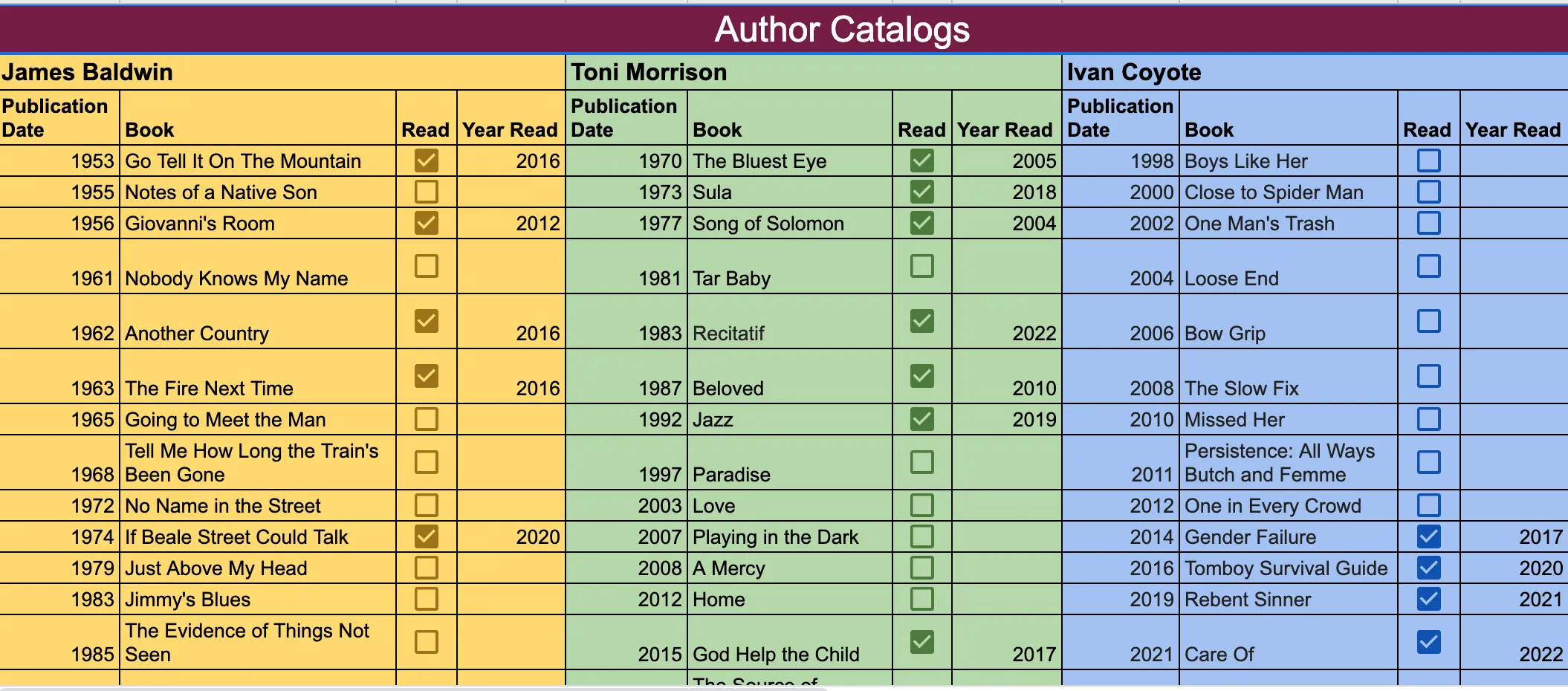
On the Joys of Having Lifelong Reading Goals
I am a spreadsheet person. Over the past five years, my reading spreadsheet has slowly grown from two tabs (reasonable) to…wait for it…16 tabs (still reasonable if you’re a data nerd). This somewhat alarming tab growth is partly due to various yearly reading challenges I participate in, or yearly reading goals I set myself. I like to have a place to keep track of these things. And while I love looking at photos of other people’s gorgeous reading journals, I’ve never been able to keep one up myself. When it comes to tracking my reading, I am a charts-and-formulas person. I’ve accepted it, and, as my 16 tabs prove, embraced it.
One of my favorite reading traditions is the time I spend between Christmas and New Years reflecting on the year’s reading, pouring over all my charts and stats, and building my new reading spreadsheet. This past December, I started making my 2023 reading spreadsheet as usual. For the past few years I’ve set myself a few yearly challenges deigned to guide and inspire my reading. One of them is my annual “Gems from the Shelves” challenge, which is a reminder for me to read books I already own, i.e. that did not come into my house in 2023. For the past two years, I’ve set the goal at 100, and I’ve never met it, but that isn’t the point, really. A tab in my reading spreadsheet is basically an intention. The idea isn’t to complete the goal — simply naming the goal keeps it in the forefront of my mind.

I have a few other yearly challenges like this — one is to read 50 books by disabled writers, and another is to read 50 books by Indigenous authors. Again, I have never completed either of these challenges. I do read a lot, but I purposely make these goals lofty. I am a spreadsheet person, yes, but my reading spreadsheet has never felt like unnecessary pressure to me. The goals guide my reading, and my reading life is richer because of it. The numbers don’t really matter.
So as I was creating the new tabs for 2023 in my spreadsheet, I started to wonder why I had started making annual challenges in the first place. If the point of these goals and challenges is not about reading a certain number of books, then why does the timeframe matter? If creating a spreadsheet tab is essentially a concrete reminder that I love and value Indigenous lit, and want to prioritize it, why bother making a new list each year?
This change in how I think about reading goals came into even sharper focus when I made a tab for another challenge I’m doing this year, the 10 Books 10 Decades Challenge hosted by @reggiereads on Instagram. The idea is simple and also kind of amazing: read ten books from ten different decades. I am very excited about it, and my excitement is reflected in the tab I made to track it:

I got so excited setting this up that my initial list of possibilities contained not ten, but 21 books! The challenge has already changed my reading life for the better. Alexis and Harlem Shadows were two of the best books I read in January. I have fallen head-over-heels for 20th century queer lit. I don’t know how many of these books I’ll read this year — maybe ten, maybe 12, maybe all 21! What I do know is that this kind of reading — deep backlist — is going to become a staple of my reading life. I’m not planning on making a new tab for this challenge in 2024. I’m just going to copy this one over, and keep adding to it, year after year. It will be a glorious record of this lifelong reading journey.
Once I started thinking this way, it was like a dam broke loose in my brain and I just…went for it. Without any timeframe constraints, I came up with so many more ideas, so many reading projects I had never dared to put into my spreadsheet because I knew completing them in one year would be impossible. I know I said I’ve never completed any of my yearly goals before, and that’s true, but they’ve always felt…attainable, if I really, truly pushed myself. I had made this silly, invisible rule that I hadn’t even noticed: to only record reading goals that I could, conceivably, complete in a year. I know, it doesn’t make sense to me anymore, either.
There are a few authors whose entire catalogs I know I want to read, but I’ve never had anywhere to record my progress (see above) and because of that, I rarely make progress on these goals (see further above). So this year I made a beautiful, shiny tab in my reading spreadsheet with all the authors whose complete works I want to read in my lifetime. I went back through my reading data and marked off the books I’ve already read. Just looking at these lists gets me excited!

Another goal I’ve always had is to read a book from every country in the world. I do read a fair amount of literature in translation, and I often finish a year having read books from 30 or more different countries. But now I have a running list! For the first time, I can actually imagine doing this one day. If I read five books every year from new-to-me-countries, I’ll finish in about 25 years. Sounds about right. I’m not in a rush. I’m just happy to be feeling inspired about seeking out books from countries whose literatures I rarely consider.

This switch from annual reading goals to lifelong reading goals has changed everything about how I read and how I track my reading. Lifelong reading goals feel expansive and inviting. Framing all my reading in this context means I’m not thinking about numbers or deadlines. I’m thinking about books in terms of the value they bring into my life. I don’t start fresh every year, as much as I might like to. I bring with me all my experiences, good and bad, from all the years I’ve lived before — including all the books I’ve read.











